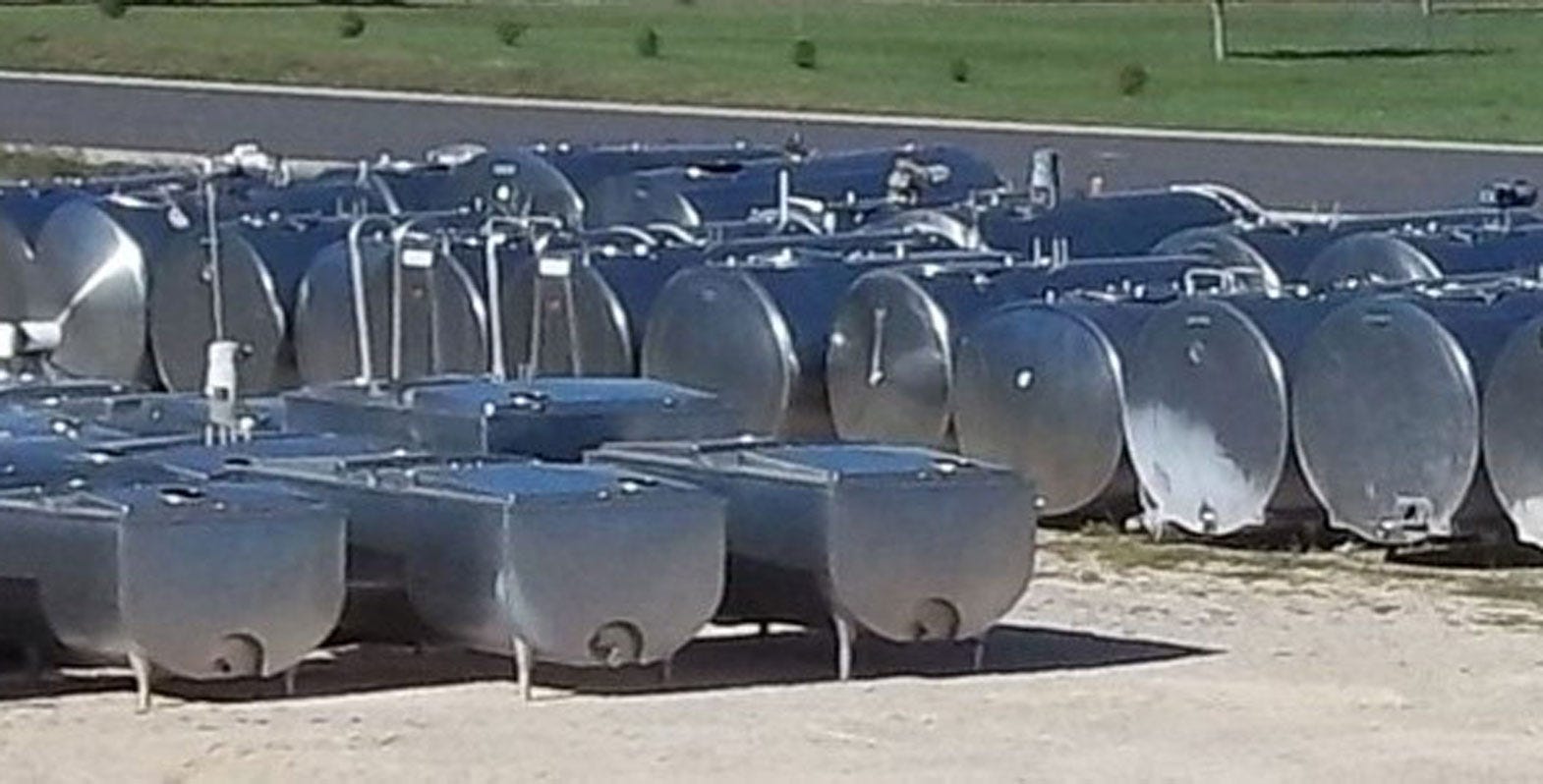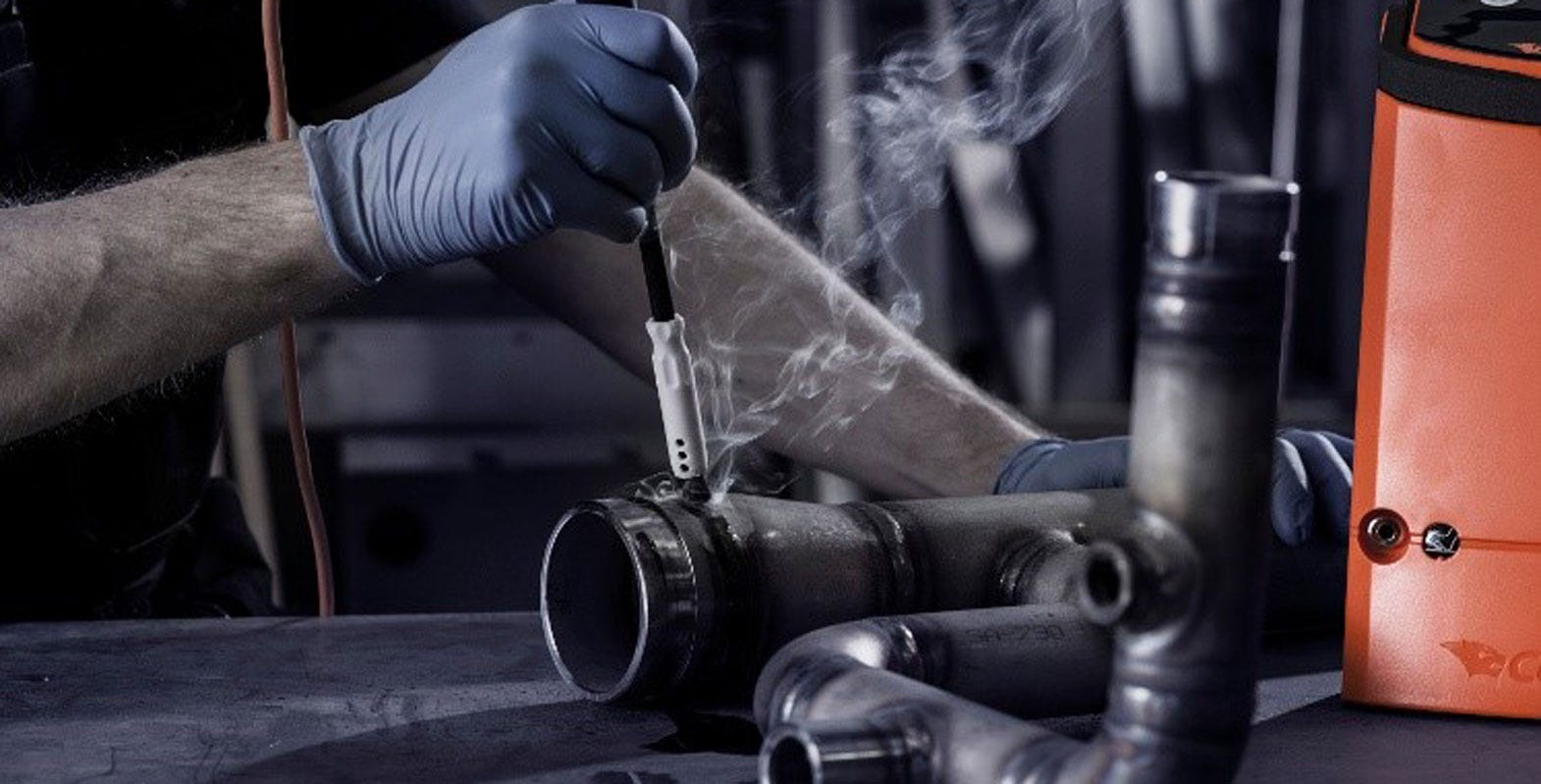How to keep up with Worksafe with pickling paste
This document has been written to help manage and improve you worksplaces when cleaning stainless steel welds with pickling paste.
The dangers of pickling paste
Pickling paste is a common and very effective method of treating stainless steel, however it is an extremely hazardous substance that must be handled with caution. If handled incorrectly, pickling paste can be a major threat to the health and safety of people and the natural environment.The hydrofluoric and nitric acid contained in pickling paste are dangerously corrosive chemicals. Exposure to these chemicals can cause:
- Skin injuries, predominantly serious skin burns
- Breathing difficulties and a sore throat if vapor is inhaled
- Poisoning, requiring emergency medical treatment
- Environmental pollution


How to handle pickling paste in the workplace
Person in charge
The person in charge is responsible for making sure hazardous substances are managed according to law. Your legal responsibilities are to:
- Get a safety data sheet for the pickling paste, and make sure the information is easily accessible.
- Make sure staff are not exposed to substances that may harm their health.
- Train staff, provide the right safety gear and make sure they use it.
- Be prepared for an emergency.
- Keep information about how to dispose of substances properly.
- Keep tracking records for tracked substances.
- Make sure the right signs are posted in the right places.
- Get the test certificates needed at your business.
- Report any serious harm to WorkSafe NZ.
Train your staff
- Teach staff how to handle and use pickling paste safely – including knowing the health effects of the substances they’re working with, and how to protect themselves.
- Minimise staff exposure to pickling paste by either eliminating, isolating or minimising staffs' usage of the substance. (See below for alternatives to pickling paste)
- Ensure staff are provided with, and correctly use the right safety gear for maximum effectiveness (including cleaning and storage.)
- Create, train and practice emergency procedures with staff.
Visit www.hazardoussubstances.govt.nz/videos and show your staff the animated videos highlighting key safety messages for general hazardous substances.
Five Steps to Safety
Step 1. Prepare your inventories
- Prepare your inventories
- Get your safety data sheets
- Use the HSNO calculator link here
What you need to do will always depend on the amount of pickling paste you have and how it is stored. Completing the inventories prepares you for using the HSNO Calculator where you can enter your workshop’s details and work out the key HSNO controls you must comply with.
A worker in the metal finishing industry may use and handle picking paste which includes the following hazardous substances: hydrofluoric acid, nitric acid, sulphuric acid.
Get a safety data sheet from your supplier
The best way to learn about the dangers of pickling paste you use is to check the safety data sheet you have, or are buying (these can differ between maunfacturers). For information specific to your products, read both the label and MSDS.
You must have a SDS for every brand of pickling paste at your workshop. Ask your supplier for one if any are missing or if it’s more than five years old. SDSs have important information about first aid, safe storage, cleaning up spills and what personal protective equipment should be worn by people using that product.
You are legally required to have SDSs for the substances in your workplace. Your test certifier will check you have them before issuing your location a test certificate.
Step 2. Assess the health risks
Think about the immediate and long term health risks, then think about whether you can:
- Eliminate/minimise the use of pickling paste (see alternatives to pickling paste)
- Isolate its use away from people
- Minimise exposure and wear the right safety gear.
Exposure to pickling paste can seriously damage your health if it isn't used safely. While some effects can be seen immediately, others can cause long-term chronic effects which are harder to see and often more serious.
Evaluating exposure
Due to the serious health effects that can be caused from pickling paste it's important to determine the extent of risk to people from exposure. It’s only after a full assessment has been done that the appropriate control measures, training and monitoring can be put in place.
- Who could be exposed? - Think about which staff work directly with pickling paste, as well as those who come into contact by being in surrounding work stations. Also think about who may come into contact with contaminated areas.
- How are people exposed? - Exposure to hazardous substances can happen in three ways: inhalation, skin absorption and ingestion. Have a look around the workshop and watch how your staff work - are they breathing in the mist, dust, gas or fumes? Do they have exposed skin? Do they wash their hands thoroughly before eating, drinking or smoking?
- What’s the degree of exposure? - You need to find out the concentration of your substances during exposure, how people are being exposed and for how long.
You will most likely need expert help as the assessment usually involves measuring air concentrations or hazardous substances in blood or urine. Check the yellow pages for occupational hygienists (under health and safety consultants) in your area. A health surveillance programme is a good idea for your staff. This programme must be carried out by a nurse and/or doctor who understands your workshop and the problems you have in your industry. Health surveillance includes:
- Collecting, maintaining and reviewing health records checking for signs of disease
- Pre-employment enquiries, for example, is there a past history of asthma
- Pre-placement medicals when an employee first begins at your workshop.
Taking action: eliminate, isolate, minimise
Working in the metal fabrication industry, chances are you've got a need for pickling paste. However there are safer alternatives to pickling paste available. Given the risks associated with exposure to pickling paste, it's a good idea to see if an alternative product could work for your business. If an alternative to pickling paste is not an option, the next steps are to isolate the use and minimise risk of exposure.
- Isolating use - Isolate the use of pickling paste away from people as much as possible. Look at how you can completely enclose the pickling process within shields so people aren’t exposed to any fumes or splashes.
- Minimise risk - Once the use of pickling paste has been isolated you must minimise exposure. This can generally be done in three ways:
- Engineering - ensure your workplace is properly ventilated to dilute toxic vapours and gases in the air. Regular maintenance checks of your ventilation system are also important.
- Administrative controls - alterations to your business' work processes can help to minimise exposure. For example, introducing job rotation will not only up-skill your staff, but can ensure staff are not exposed to the pickling paste for prolonged periods. It is also essential staff are provided with adequate space for eating and drinking away from hazardous substances, and they must be able to thoroughly wash their hands so as to not unintentionally ingest the substance.
- Safety gear - staff must have suitable safety gear to do their job safely. It is your responsibility to provide it. Safety data sheets should include information about the right safety gear to wear. If you’re unsure, ask your supplier or contact WorkSafe NZ or an occupational health specialist for advice.
Step 3. Use and store pickling paste safely
- Store only what you need
- Decant your substances carefully
- Dispose of used substances properly - Pickling paste, must be disposed of through a reputable hazardous waste company. Check your yellow pages for businesses in your area.
Step 4. Get ready for an emergency
- Assess the type of emergencies that may happen
- Make sure staff know their roles
- Have an emergency response plan with equipment easily available
- Be prepared for a spill
- Have an annual emergency drill (not just a fire drill)
Step 5. Key HSNO controls
Use the HSNO Calculator (Step 1) to work out which key HSNO controls you need for your workshop. Be aware that stationary container system test certificates and tracking are not included in the calculator. You will need to manage these in your workshop; talk to your test certifier for more information.
Your Practical Guide (inside the Hazardous Substances Toolbox) has more information on all key controls.
Test certificates are issued by test certifiers. A test certifier is an independent service provider who has been approved by the Environmental Protection Authority (EPA) to issue test certificates. There is a register of test certifiers on the EPA website.
To find a test certifier in your area, go to www.epa.govt.nz. At the top of the homepage is a tab called Search our records. Place your cursor on that tab and click on HSNO Test Certifiers.
Fire extinguishers
Fire extinguishers are used to put out fires before they reach your hazardous substances so to prevent a more serious situation from happening.
Signs
Signs are important to warn staff , visitors and emergency services that hazardous substances are present in your workplace. Emergency services rely on them when they respond to any problems to decide on their course of action and what safety gear they will wear.
Signs must be made out of a durable material and clearly show in plain English or in pictograms:
- That hazardous substances are present
- The type of hazard of each substance present
- Precautions such as ‘keep away’
- Emergency actions such as “Call Emergency Services – Dial 111”.
Signs should be present at the entrances to your property, at each entrance to your workshop or area where you use pickling paste.
Tracked substances
Hydrofluoric acid solutions that are used in pickling paste need to be tracked. Your supplier will tell you which substances must be tracked. If practical, you should eliminate tracked substances as they have higher risks and add compliance costs to your business. To buy a tracked substance your supplier will need to confirm there is an approved handler available. You may also need a location test certificate.


Approved handler test certificates
The approved handler must be available while the pickling paste is being handled. Approved handler is someone who has specific training, knowledge and experience on how to use particular substances properly.
Becoming an approved handler
Approved handler test certificates are issued by test certifiers. To get an approved handler test certificate, you must demonstrate to a test certifier that you have:
- Practical skills (competency) to safely handle and use the products
- Knowledge of the products you will be handling knowledge of the HSNO legislation.
The evidence for this is usually a written record from a training provider or an assessment of practical handling skills and experience from a work supervisor.
Location test certificate
A location test certificate certifies that the place hazardous products are used and stored is safely managed, according to the rules. Location test certificates are issued for one year by test certifiers.
Emergency response plan
A location test certificate certifies that the place hazardous products are used and stored is safely managed, according to the rules. Location test certificates are issued for one year by test certifiers.
Safer alternatives to pickling paste
A better and safer alternative to pickling paste is electrochemical cleaning. Electrochemical cleaning allows stainless steels to achieve a perfect smoothness while making welds corrosion free. Some studies have even shown that electrochemical cleaning is able to restore the corrosion resistance of steel and also enhance it! In addition to these benefits, electrochemical cleaning eliminates all the health hazards associated with pickling paste, including acid burns, difficulty breathing, and poisoning. To find out more on electrochemical weld cleaning, click the button below:


 Need assistance?
Need assistance?







